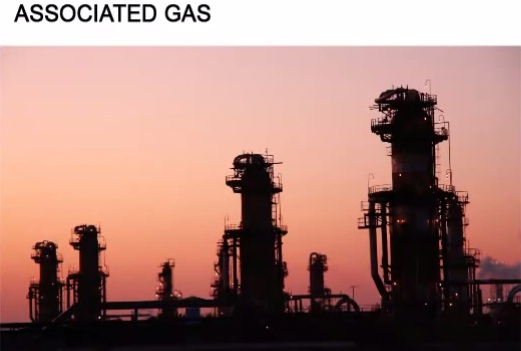Natural gas is a mixture of methane, with lower amounts of other hydrocarbons and other substances.
These other constituents modify the physical and chemical characteristics of natural gas, for example, inert gases make the natural gas heating value lower.
The substances that can be in natural gas are:
• Carbon dioxide
• Nitrogen
• Hydrogen sulphide
Heavier hydrocarbons which can be separated to give condensate (gasoline) Water vapour is always contained in natural gas.
Carbon Dioxide (CO2)
The content in CO2 varies from traces to very high amounts. It forms from the reaction of field water with silicates and carbonates. Even a minimal presence of carbon dioxide in natural gas saturated with water forms carbonic acid, which is the cause of severe corrosion in the surface equipment and the pipelines, that are usually made of carbon steel. Its removal is therefore, often a “must” in the plants.
The CO2 removal can be done by absorption using ethanolamine. Unfortunately, since the elimination process is carried out in the plants, corrosion inside well production tubing and conducts it is prevented or mitigated through injection of inhibitors.
The corrosion of carbon steel by CO2 is dependent on two factors: the presence of water or saturated steam and the partial pressure of CO2. CO2 is corrosive for carbon steel, only when it is combined with water, because it creates carbonic acid and ionic carbonic acids.
CO2 + H2O = H2CO3
H2CO3 = H+ + HCO3
Nitrogen (N2)
It is almost always present in small percentages in natural gas. Nitrogen does not cause corrosion in the equipment, but reduces the heating value of the gas. Its elimination can be required to produce sales gas with the specified calorific value.
The removal of nitrogen from the sales gas is normally accomplished using a cryogenic process.
Nitrogen is also commonly available as utility fluid, in all petrochemical plants, where is used for blanketing tanks and vessels and for inerting the plants and pipelines. Nitrogen is normally produced from the air either via an air fractionation unit or from air treated on carbon molecular sieves.
Usually it is stored in liquid form in special double-wall tanks. In gaseous state it is available in the plant from supply stations as part of a distribution network., normally at about 8 bar.
Hydrogen Sulphide (H2S)
it is important to know that H2S is the most dangerous compound that can be found in natural gas. It is responsible of corrosion phenomena taking place inside the gas treatment facilities; it is highly toxic and even lethal over certain concentrations.
Hydrogen sulphide is a weak acid in dry conditions, but in the presence of water its corrosive power is high.
H2S, corrodes carbon steel, because of its ionisation into H+ and HS –.
Its corrosion however, is less rapid than that of CO2 due to its lower ionisation. Moreover, H2S is depolarised by oxygen. The corrosion by hydrogen sulphide can also cause the so called sulphide stress corrosion cracking,
that can be avoided mainly by a proper material selection. To reduce general corrosion caused by H2S and CO2 inhibitors are used.
Inhibitors are substances injected into the pipes in low quantities. Main feature of inhibitors is the fact that some functional groups in their molecules can form very thin layers on the pipe wall, maintaining the metallic surface isolated from the acid. Among these compounds the most commonly used are the amino compounds.
Natural Gasoline
Gasoline is a liquid hydrocarbon mixture that forms from the condensation of the fractions that are less volatile than natural gas, that is to say propane, butane, pentane and higher hydrocarbons. Gasoline, from a commercial
standpoint, is defined by the following characteristics:
1. REID vapour pressure (0,7 bar)
2. Volatile substances @ 60 °C (28 ÷ 85 %)
3. Volatile substances @ 135 °C (> 90 %)
4. Final boiling point (< 190 °C)
5. Sourness Absent (Not corrosive)
The content of heavy hydrocarbons in the natural gas H2S, CO2 are the key factors for the definition and the design of proper treatment units.

